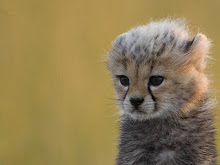While in Brazil I saw a multitude of birds. There were parakeets, hawks, owls, egrets, ibises, rheas (ostrich like birds), toucans, and my favorite, the macaws. Macaws are very large parrots that tend to be quite colorful. I saw two types while in the Brazilian Pantanal. The first was the blue hyacinth macaw, Anodorhynchus hyacinthinus, and the second was the red-and-green macaw, Ara chloropterus, which I originally mistook for the scarlet macaw due to the similar dominance of the color red in their feathers.
 To the left you can see two red-and-green macaws. These vibrantly colored birds were most commonly seen in pairs because they are monogamous, meaning they mate for life.
To the left you can see two red-and-green macaws. These vibrantly colored birds were most commonly seen in pairs because they are monogamous, meaning they mate for life.
Luckily, there are conservation efforts in progress. One particularly important one is the Hyacinth Macaw Project. This project is occurring in the Brazilian Pantanal, a very critical area for the hyacinth macaw since 70% of the population resides in this region. Fieldworkers are educating locals as well as creating artificial nests to help the macaws. Their efforts along with those of the locals have greatly reduced the illegal trafficking of the birds. It looks like there may yet be hope for these beautiful creatures.
 To the left you can see two red-and-green macaws. These vibrantly colored birds were most commonly seen in pairs because they are monogamous, meaning they mate for life.
To the left you can see two red-and-green macaws. These vibrantly colored birds were most commonly seen in pairs because they are monogamous, meaning they mate for life. Here are two blue hyacinth macaws. They, like the red-and-green macaws, are also monogamous. Hyacinth macaws are the largest macaw species in the world, measuring 1 meter (3.3 feet) from head to tail! They usually lay two eggs at a time, but only normally reaches adulthood due to predation. Their natural predators are egg predators such as coatis, skunks, and most predominantly toucans. Once a bird has reached adulthood it can live up to almost 50 years.
Sadly these blue hyacinth macaws are seriously endangered due to habitat destruction and the illegal pet trade. Habitat destruction is a serious issue when it comes to these birds because they tend to be extremely selective with the trees that they choose to nest in. Hyacinth macaws will only nest in manduvi trees that are at least 60 years old. This is because only manduvi trees that are 60 years or older can bear cavities large enough for these macaws.Luckily, there are conservation efforts in progress. One particularly important one is the Hyacinth Macaw Project. This project is occurring in the Brazilian Pantanal, a very critical area for the hyacinth macaw since 70% of the population resides in this region. Fieldworkers are educating locals as well as creating artificial nests to help the macaws. Their efforts along with those of the locals have greatly reduced the illegal trafficking of the birds. It looks like there may yet be hope for these beautiful creatures.
-I took these photos while in the Brazilian Pantanal. Click on them for a better view and let me know what you think-
References: http://www.eol.org/pages/1177958
http://en.wikipedia.org/wiki/Hyacinth_Macaw



These are amazing pictures and you are a wonderful photographer
ReplyDeletenice blog!
ReplyDeletethomasbirds.blogspot.com